When exploring museums in this city, it does feel special when curators & designers set out to represent District culture and history, specifically. Even within those exhibitions, it’s perhaps more rare that curators intentionally and skillfully juxtapose DC history with national history in the same room at the same time.
This is precisely what I experienced at the newest exhibition by the Capital Jewish Museum, “LGBTJews in the Federal City.” I had been in this exhibition space before, most recently for JewCE: The Jewish Comics Experience. Perhaps due to the layout, or perhaps due to the spatial organization of this new exhibition – either way – this space felt more expansive than ever, and the museum uses that space well.
A timely show that will be with us for quite a while (closes January 4) LGBTJews in the Federal City overachieves in an exploration of Queerness + Jewish Washington, across various perspectives, while offering multiple thematic entry points. Here were some of my favorite aspects:
Timelines. You probably know this about me at this point (or if not, now you do): I love timelines. One event can be a significant turning point in a struggle or campaign, but unless I understand the context, I’m not fully grasping the full narrative. In what might seem overwhelming to some, I absolutely loved the detailed timelines, from the late 18th century to essentially, the present day. They are cleverly paced and broken down with contextual subheadings for added focus.
Defining the narrative. This is something I have come to expect from the Capital Jewish Museum and as an historian who is keenly aware that what I don’t know exponentially dwarfs my actual knowledge of the human experience, I like to learn the definitions of terms referenced in an exhibition. This exhibition actually greets visitors with clear and understandable explanations of symbols we may have all seen, but perhaps didn't understand the origin of like the Lambda symbol, Pink Triangles, or Red Ribbons. Later, a text panel sharing Jewish values and concepts referenced within, or important to the understanding of, the material in the exhibition. Wall space and floor space are precious in exhibition bays and I appreciate that some of that was used to, essentially, set the table for basic understanding for visitors.
Treating DC like a real place. What do I mean by this? In national museums or outside presentations of DC, the District is often presented exclusively as the capital of the United States containing the federal government. What’s not always acknowledged are the ways decisions made on the federal level elevate or challenge District history, its people, and their cultural values and practices. This exhibition presents a perfect example of how to integrate a national timeline of events alongside the local timeline of events with the added context of why each timeline matters to the other. Three examples that shone through for me were:
The founding of Bet Mishpachah (a congregation for LGBT & queer Jews) here in Washington DC reverberated in Jewish communities across the U.S. It may not have been the first or largest congregation of its kind, but since we are the capital, what happens locally often lands in the spotlight of communities nationwide.
Of course federal policy handed down in the form of laws, executive orders, or Supreme Court decisions apply to DC and Washington area residents, too. The exhibition does a Civics 101 level explanation of how recent federal precedents affects the LGBTQ population, but expertly juxtaposes, in the same exhibition bay, how the DC area Jewish community has participated in the national story of evolution of LGBTQ rights and challenges. From simply being acknowledged in the history books to present day activism over life & death issues that captivate traditional and social media today.
I love maps. I was pleased to see a visual representation of past and present Navy Yard neighborhood represented in a walking tour map. In a sort of built environment cultural archaeology, this one map helps contextualize the loss of safer places for queer Jews including bars & clubs that used to exist in the neighborhood. Many, if not all of the clubs were displaced over the course of the last 20 years of real estate development re: gentrification in the neighborhood.
Interactive. Truly a hallmark of exhibitions at the Capital Jewish Museum, visitors can make the choice to react to, reflect on, and generally immerse themselves while engaging the material. A tri-fold exhibition guide prompts readers to ask themselves questions such as “What do you feel?”, “Does anything inspire you to act?”, or “Did anything offer you a new perspective?” In another example, near the end of the exhibition is a clever word matching game to learn a bit of non-binary Hebrew vocabulary not far from a wall panel about present day queer positive movements within Judaism regarding language. This exhibition is deep without being overwhelming.
World Pride just concluded in Washington, DC. Pride month continues through June. And the LGBTJews exhibition has been open for a little less than a month as of this writing. Even beyond this month the exhibition will stand as another great companion to the permanent exhibitions at the Capital Jewish Museum. On view through January 4, 2026. General admission to the museum is free (with a $10 suggested donation). Special exhibitions, including this exhibition, are $12. Check the calendar of events for Community Days this summer when all visitors are able to enter for free. The Capital Jewish Museum is open Wednesday through Sunday.
THANK YOU to all Patreon members who made this Exhibition Spotlight post possible. The Attucks Adams Patreon page features early access to all Looking Blog posts, behind the scenes access to all tour building & writing, street & landscape photography, and regular DC history posts not available anywhere else. Join the free tier for limited access, or support our work with a paid tier for full access to 300+ archived entires. Check it out here!












